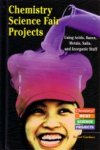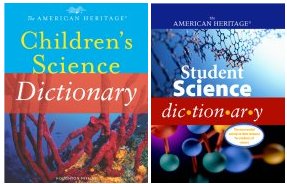Boosting Fuel Cells Additional Information
You can learn more about how a fuel cell works at science.howstuffworks.com/fuel-cell.htm (HowStuffWorks) and americanhistory.si.edu/fuelcells/basics.htm (Smithsonian Institution).
Information about hydrogen as a fuel can be found at www.eia.doe.gov/kids/energyfacts/sources/IntermediateHydrogen.html (U.S. Department of Energy).
Information about different types of fuel cells is available at www.eere.energy.gov/hydrogenandfuelcells/fuelcells/fc_types.html (U.S. Department of Energy), www.fuelcelltoday.com/FuelCellToday/EducationCentre/EducationCentre
External/EduCentreDisplay/0,1741,FCInfoTypes,00.html
(Fuel Cell Today), and www.rmi.org/sitepages/pid556.php (Rocky Mountain Institute).
General Motors research on cars powered by fuel cells is described at www.gm.com/company/gmability/adv_tech/400_fcv/index.html (General Motors).
Information on proton exchange membrane (PEM) fuel cells can be found at americanhistory.si.edu/fuelcells/pem/pemmain.htm (Smithsonian Institution).
Learn more about fuel cells for cell phones at www.riverdeep.net/current/2000/06/front.270600.cellphone.jhtml (Riverdeep Interactive Learning).
Sohn, Emily. 2005. Revving up green machines. Science News for Kids (June 8). Available at http://www.sciencenewsforkids.org/articles/20050608/Feature1.asp.
______. 2005. Nature’s medicines. Science News for Kids (June 1). Available at http://www.sciencenewsforkids.org/articles/20050601/Feature1.asp.
Information about the 2005 Intel International Science and Engineering Fair can be found at www.intel.com/education/isef/highlights.htm (Intel) and http://www.sciserv.org/isef/ (Science Service).
Books recommended by SearchIt!Science:
 |
Chemistry Science Fair Projects Using Acids, Bases, Metals, Salts, and Inorganic Stuff — Robert Gardner
Published by Enslow Publishers, 2004.
You’ll find all kinds of neat science fair projects involving chemistry in this book, which is divided into five chapters. The first, “Identifying Substances,” discusses boiling, freezing, density, and separating mixtures, while the second chapter discusses conservation of matter. “Some Chemical Reactions and Their Reaction Speeds” has experiments about rust, oxygen, and the rate at which hydrogen peroxide decomposes. In “Energy in Chemical and Physical Changes,” you’ll look at energy, heat, and condensation. The last chapter features projects about acids, bases, ions, and building an electric cell. |
Power Words
catalyst A substance that starts or speeds up a chemical reaction between other substances. Catalysts are not changed by the chemical reactions they are involved in. Certain molecules in saliva are catalysts that help us digest food.
electrolyte A substance that can conduct electricity in a solution. An electrolyte’s atoms get their electric charge by adding or giving up electrons. The movement of these charged atoms, called ions, carries the electric current.
fuel cell A device that uses a chemical reaction to make electricity. Fuel cells are used in space shuttles, where they create electricity by combining hydrogen gas with oxygen.
platinum A silver-white chemical element that is a soft metal. Platinum has a high melting point and does not rust. It is used in jewelry and as a catalyst.
polymer A chemical compound that is made up of a chain of smaller molecules. Cellulose is a polymer that occurs naturally in plants, and nylon and acrylic are polymers that scientists have created in the laboratory.
Copyright © 2002, 2003 Houghton-Mifflin Company. All rights reserved. Used with permission.
